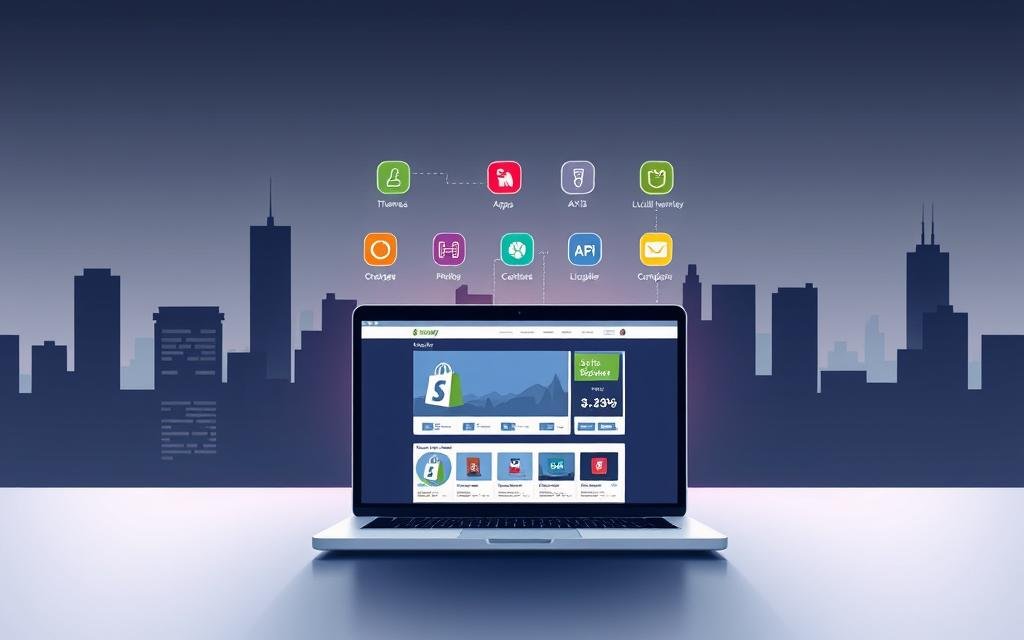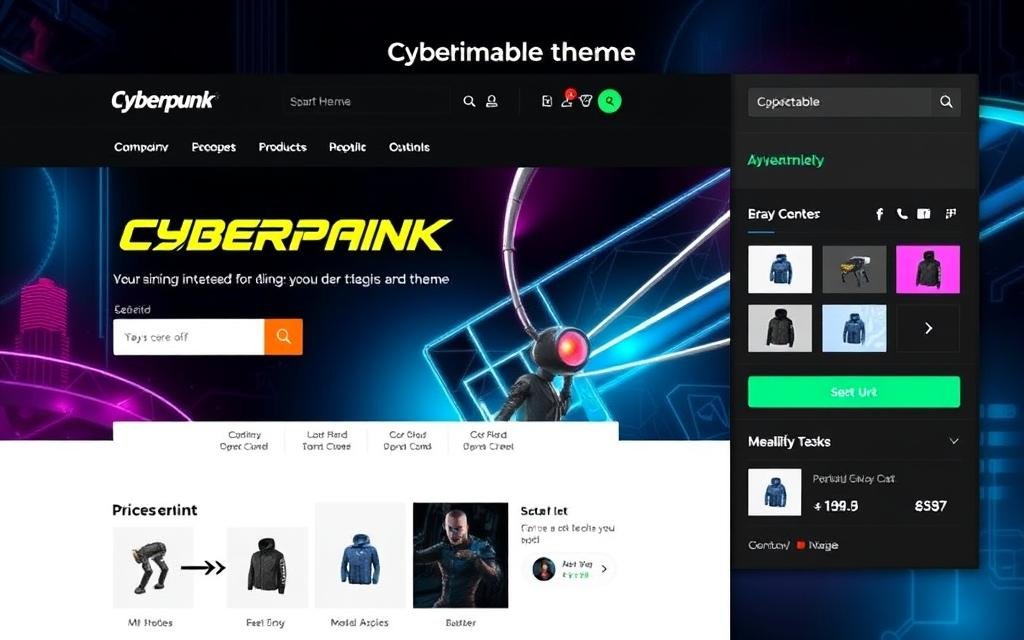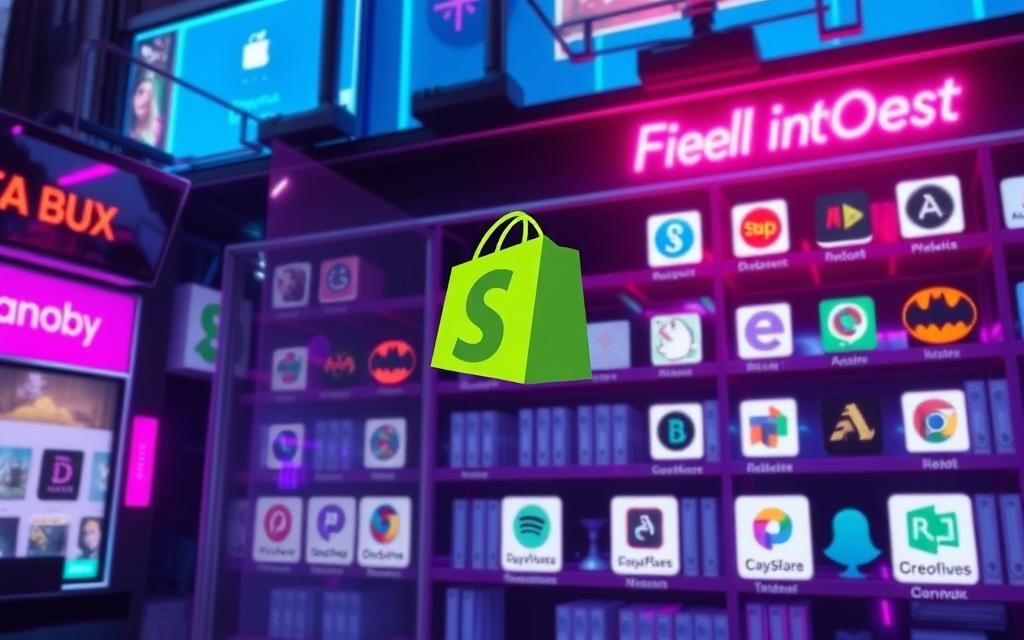E-commerce has revolutionized the way businesses operate, and Shopify has emerged as a leading platform for online stores. With its user-friendly interface and robust features, Shopify enables entrepreneurs and developers to create seamless e-commerce experiences.
As a popular e-commerce solution, Shopify offers a range of opportunities for web design and development. By leveraging Shopify’s ecosystem, including themes, apps, and the Partner program, businesses can enhance their online presence and drive sales.
In this comprehensive guide, we will explore the world of Shopify development and provide insights into creating a seamless e-commerce experience. We will cover the benefits of Shopify development, the skills required to excel in this field, and the potential for recurring revenue through Shopify development services.
Key Takeaways
- Understanding the Shopify ecosystem and its opportunities for businesses
- Benefits of Shopify development compared to other e-commerce solutions
- Skills required to excel in Shopify development
- Potential for recurring revenue through Shopify development services
- Importance of creating a seamless e-commerce experience
Understanding Shopify Development Fundamentals
Understanding the fundamentals of Shopify development is key to unlocking its full potential. As an e-commerce platform, Shopify offers a unique set of features and capabilities that distinguish it from other solutions.

What Makes Shopify Different
Shopify’s architecture and capabilities set it apart from other e-commerce platforms like WooCommerce, Magento, and BigCommerce. Key differences include:
- Shopify’s templating language, Liquid, which powers the platform’s flexibility.
- A hosted solution approach that simplifies development workflows.
- An API-first approach that enables extensive customization options.
These features make Shopify an attractive choice for businesses looking to create a seamless e-commerce experience.
The Benefits of Becoming a Shopify Partner
Becoming a Shopify Partner offers numerous benefits, including the ability to create an unlimited number of development stores. These stores can be transferred to clients, and partners earn a recurring commission on eligible stores. As a Shopify Partner, you also gain access to exclusive development tools and resources.
The Shopify Partner program facilitates collaboration between developers, designers, and merchants, making it an ideal choice for those looking to build a successful e-commerce development business.
Getting Started with Shopify Development
To get started with Shopify development, it’s essential to grasp the fundamental elements that make it a powerful e-commerce solution. This involves understanding the Shopify ecosystem and the tools available for development.
Creating Your Shopify Partner Account
Creating a Shopify Partner account is the first step towards unlocking the full potential of Shopify development. This process involves signing up on the Shopify Partner website, providing required information, and verifying your email address.

Development Store Basics and Limitations
As a Shopify Partner, you can create development stores that are free of charge and offer most of the functionality of the Advanced Shopify plan. These stores are ideal for testing and development purposes. However, there are some limitations, such as not being able to process orders through an active payment provider or install paid apps until you switch to a paid plan.
Setting Up Your First Development Environment
Setting up your development environment involves creating a development store and accessing it from your Partner Dashboard. You can then use tools like Shopify CLI and Theme Kit to start building and customizing your store.
Creating and Managing Development Stores
To effectively develop and test Shopify stores, developers need to understand how to create and manage development stores. Development stores serve as a crucial environment for testing and refining store configurations before they are launched or transferred to clients.
Step-by-Step Process to Create a Development Store
Creating a development store involves a straightforward process accessible through the Partner Dashboard. To create a development store, navigate to the “Stores” section in your Partner Dashboard, click on “Add store,” and then select “Development store.” You will be prompted to enter store details and choose whether to start with test data or a blank store.
The option to start with test data is particularly useful for realistic testing. It populates the store with demo products, sample products, test orders, and a modified theme, providing a comprehensive environment to test various store functionalities.
Leveraging Generated Test Data for Realistic Testing
Using generated test data allows developers to test their store configurations in a realistic setting. This test data includes typical e-commerce primitives such as products, collections, customers, and orders. By selecting “Start with test data” when creating a development store, you can access this pre-configured data. However, it’s essential to note that stores created with generated test data are not transferrable to clients.
Managing Multiple Development Stores Efficiently
Managing multiple development stores requires a strategic approach. Developers can efficiently manage their stores by implementing a naming convention that reflects the store’s purpose or client association. Additionally, maintaining detailed documentation of each store’s configuration and purpose can help in keeping track of multiple stores.
| Store Type | Purpose | Transferrable to Client |
|---|---|---|
| Development Store with Test Data | Testing and Development | No |
| Blank Development Store | Custom Development | Yes |
| Client Store | Live Client Stores | N/A |
By understanding how to create and manage development stores effectively, developers can streamline their development process, ensuring that they deliver high-quality stores to their clients.
Enhancing Store Functionality
To take a Shopify store to the next level, it’s essential to focus on enhancing its functionality. This involves a combination of customizing themes, installing and testing appropriate apps, and setting up essential store features.
Customizing Themes for Client Needs
Customizing a Shopify theme is a critical step in creating a unique and engaging store design for clients. Shopify theme customization tools allow developers to modify pre-built themes or create custom designs from scratch. Understanding when to use pre-built themes versus custom development is key. The theme architecture in Shopify is designed to be flexible, enabling effective modifications to meet client requirements.

Installing and Testing Partner-Friendly Apps
Shopify Partners have access to a collection of partner-friendly apps that can be installed and tested in development stores without incurring costs. These apps are a great way to enhance store functionality without breaking the bank. To install and test these apps, developers can browse the Shopify App Store and select apps that are marked as partner-friendly.

Setting Up Essential Store Features
Before handing over the store to clients, it’s crucial to set up essential features such as payment gateways, shipping options, and tax configurations. These features are vital for the smooth operation of the store. By configuring these settings correctly, developers can ensure that the client’s store is fully functional and ready for launch.
Shopify App Development Essentials
Shopify app development is a nuanced process that involves choosing the right development tools and understanding the platform’s data model. To build a successful Shopify app, developers need to grasp the fundamentals of Shopify’s architecture, APIs, and data structures.
Building Your First Shopify App
To start building a Shopify app, you first need to create a development store. This store serves as an environment where your app can be installed and tested. For instance, when using the Shopify App CLI to create a Node.js or Rails app, you’re prompted to select a development store before the app project is generated. Understanding the different types of Shopify apps—public, custom, and private—is crucial in determining the app’s purpose and audience.
Understanding Shopify’s API and Data Model
Shopify’s API structure is pivotal for app development. It allows developers to authenticate and make API calls to interact with Shopify stores. Understanding Shopify’s data model is equally important, as it enables developers to work with core resources like products, orders, and customers effectively.
Testing and Debugging Your App
Thorough testing and debugging are critical before submitting your app to the Shopify App Store. This involves leveraging test data, understanding webhooks for real-time integrations, and employing debugging techniques specific to Shopify app development.
By mastering these aspects, developers can create robust, functional, and user-friendly Shopify apps that enhance the e-commerce experience.
Preparing and Transferring Stores to Clients
Transferring a Shopify store to a client is a significant milestone that demands careful planning and precise execution. Ensuring a smooth transition is crucial for client satisfaction and for maintaining a positive relationship.
Pre-Transfer Checklist for Client Handover
Before transferring ownership of a development store to your client, it’s essential to complete a series of tasks. This includes adding your client as a staff member and ensuring they complete their staff account setup. Additionally, you’ll need to add your client’s address to the store settings, especially if they are based in a different country.
A comprehensive pre-transfer checklist is vital to ensure the store is ready for client handover. This checklist should include verifying that all necessary tasks are completed and that the store is fully functional.
Step-by-Step Guide to Transferring Store Ownership
Transferring store ownership involves several key steps. First, ensure your client is added as a staff member and has completed their account setup. Then, proceed to transfer the ownership, being aware that this action is irreversible. After the transfer, you’ll retain access as a collaborator but will no longer have access to financial information.
Timing the transfer according to the Shopify billing cycle can enhance the client experience. It’s also crucial to be aware of potential pitfalls and take steps to avoid them.
Earning Recurring Revenue Through the Partner Program
The Shopify Partner Program offers an opportunity to earn recurring revenue share through various means, including app recommendations and store referrals. By leveraging these opportunities, Shopify Partners can create a steady stream of income.
To maximize recurring revenue, focus on providing value to your clients through strategic recommendations and support. This not only benefits your clients but also enhances your earning potential through the Partner Program.
Conclusion: Building Your Shopify Development Business
As we conclude this comprehensive guide on Shopify development, it’s clear that the platform offers vast opportunities for developers and businesses alike. Throughout this journey, we’ve covered the development fundamentals, from creating a Shopify Partner account to setting up development environments and managing multiple stores efficiently.
To succeed in Shopify development, it’s crucial to build a robust portfolio showcasing your expertise, whether it’s in custom theme development, Shopify app creation, or store migrations. Specializing in specific industries or types of development can also help you stand out. As you build Shopify stores, focus on delivering high-quality, scalable solutions that meet the evolving needs of merchants.
To scale your business from a solo freelancer to an agency, focus on development strategies that drive growth, such as creating recurring revenue streams through maintenance plans and support services. Engaging with the Shopify Partner community can also open up collaboration and growth opportunities. By staying updated with the latest Shopify trends and best practices, you can position yourself for success in the ever-evolving e-commerce landscape, creating impactful online stores that thrive.
